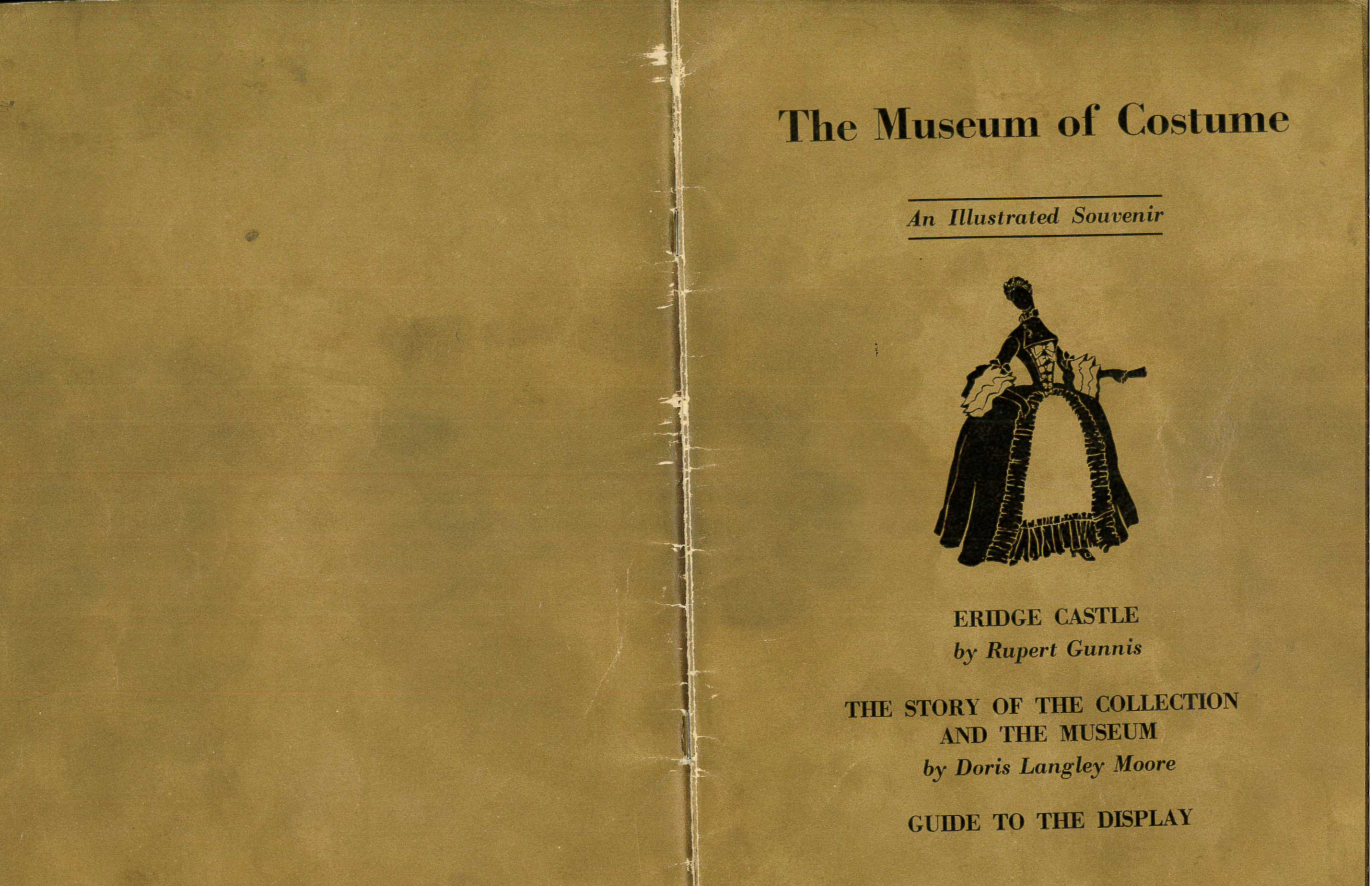Fashion Museum Bath opened its doors at the Assembly Rooms, Bath on 23rd May 1963. Originally known as the Museum of Costume, it was the brainchild of writer, costume designer and fashion historian, Doris Langley Moore (1902-1989). Langley Moore started collecting fashion in 1928 after receiving an 1870s dress from her mother-in-law. She went on to become a prominent scholar in the emerging field of dress history, publishing her book The Woman in Fashion, in 1949, which featured images of many of the pieces in her collection photographed on live models such as actress Vivien Leigh and ballerina Margot Fonteyn.

[Doris Langley Moore, 1933, photograph by Layfayette]
Quickly amassing over 5,000 pieces, Langley Moore began exploring opportunities to display her collection, feeling:
‘There is a very great need in London of a gallery of costume – a fashion centre where designers of every metier, members of the theatrical profession, film directors, art students and interested persons in general, might have access to a reference library of dress, to picture, and to actual clothing.’ Langley Moore, 1949
Despite the reference to London, the collection first went on display at Eridge Castle, Kent in 1955, in the form of an exhibition called the Museum of Costume. After being in Kent for three years it then went to the Royal Pavilion in Brighton where it received over 100,000 visitors over three months in 1958. Langley Moore was still looking for a permanent home for her collection and it was widely reported Brighton Town Council were considering taking it on.

[Guidebook, The Museum of Costume, Eridge Castle, c.1955]
After the success of the Eridge Castle and Brighton Pavillon exhibitions, the Museum of Costume went on display in Bath at the Octagon, Milsom Street, where it was open for a month from May to June 1959 in conjunction with the Bath Festival. The exhibition was popular with local residents and Langley Moore was herself pleased with the location, noting ‘Nothing would please me more than for the exhibition to be staged permanently at Bath – I am very keen on the idea1’. Conversations soon started between Langley Moore and Bath City Council, with the Council suggesting the Museum of Costume could be housed in the Assembly Rooms, which were due to re-open in 1963 after refurbishment. Just a few months later, in December of that year, the full collection arrived in the city, delivered in two Pickford trucks, and formally gifted to the council.
Langley Moore was appointed as Curator of the Museum of Costume to oversee the creation of the new Museum. She was actively involved in this new chapter, curating the displays and soliciting new donations for the collection. She championed an exciting, fresh style of display which saw garments mounted on ‘realistic’ mannequins – with wigs and accessories - styled to reflect the period of the garment. These were carefully posed, individually and in groups, in painted stage-sets or mise-en-scène. She believed this context was fundamental in enabling visitors to understand the garments on display. The Museum was a family affair, and her daughter Pandora Moore was commissioned to paint the display case backdrops, some of which referenced the streetscape of Bath, and also helped style the mannequins, many of which are now part of the Fashion Museum collection.


[Painted case backdrop, by Pandora Moore, c.1963]
Since its opening in 1963 the Museum has hosted countless exhibitions and displays exploring the history and potential of fashion, from the much-loved original mise-en-scene displays in the Panorama Room Gallery to the more recent A History of Fashion in 100 Objects. Langley Moore’s 5,000 strong collection has also grown exponentially through generous donations and collecting initiatives such as the unique Dress of the Year programme, established in the Museum’s opening year. Now numbering around 100,000 items, the Collection is designated by Arts Council as of outstanding national importance. In 2022 the Fashion Museum Bath left the Assembly Rooms and is embarking on an exciting new chapter to make this dynamic collection more accessible than ever.

[Museum of Costume display in the Panorama Room, Fashion Museum Bath, c.1960s]









